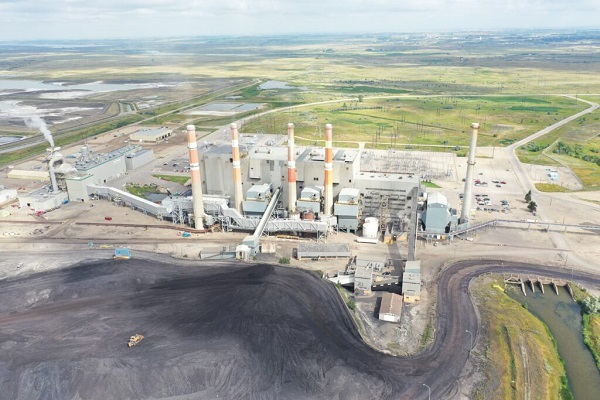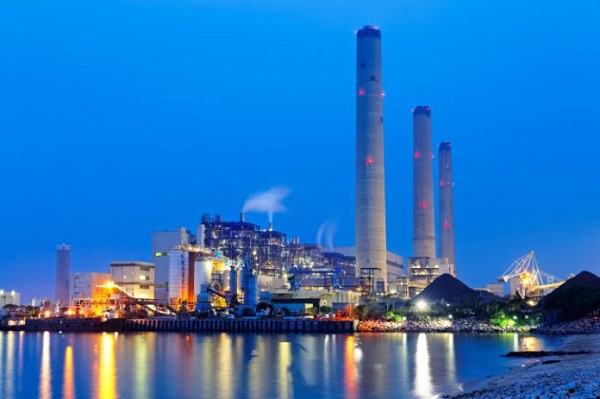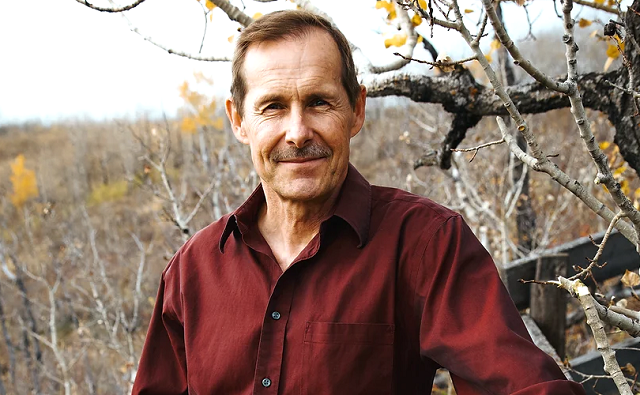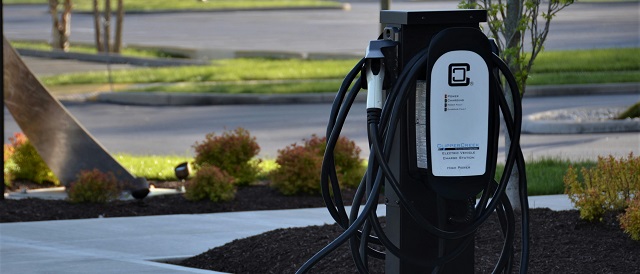Energy
A plan to save coal, power generation, and the oil industry in southeast Saskatchewan

From the Frontier Centre for Public Policy
Stop moving to shut down Saskatchewan coal – it could be the salvation of our oil industry
What if there was a way to keep coal mining jobs in Saskatchewan, continue to produce low-cost electrical power, and extend the production of a substantial portion of Saskatchewan’s oilfields not by decades, but by generations? And in doing so, we could still dramatically reduce carbon dioxide emissions, and maybe save some money by reducing our nuclear rollout?
All of this is now possible, and it has everything to do with keeping our coal miners digging and our coal-fired power plants going, maybe even renewing them.
There was a potentially major development for Saskatchewan’s energy sector buried in Whitecap Resources Inc.’s year-end financial report released on Feb. 21. Whitecap said about using CO2 for enhanced oil recovery, “We have also recently started CO2 injection at a pilot CO2 flood into the Frobisher formation underlying the Weyburn Midale unit. We drilled two (2.0 net) producer wells and three (3.0 net) injection wells in 2023 and initiated CO2 injection in late 2023. Early results are encouraging with a notable production response coming through approximately one month after injection, increasing oil rates on the two producer wells from approximately 40 bpd to over 200 bpd, per well. Further technical analysis to determine commerciality and large-scale development is ongoing, and we will provide updates as next steps are determined.”
While the Bakken formation got all the headlines starting around 2007, the reality is in southeast Saskatchewan, very few Bakken wells are drilled these days. Most of the activity has been Frobisher wells, especially around Steelman, where it has been targeted for decades. So if the Frobisher responds well to tertiary recovery through carbon dioxide floods, it opens up a lot of possibilities for extending the life of some of Saskatchewan’s most prolific oilfields, taking recovery rates from the mid-20 per cent range to over 50 per cent.
Back in 2012, Canadian Natural Resources Limited president and CEO Steve Laut expressed interest in using CO2 for enhanced oil recovery in the Steelman Unit.
Whitecap’s initial results were not a five per cent improvement, or 50 per cent, but five times higher. That’s something everyone, including the provincial government, should take notice of. Imagine if you could increase crop production from 60 bushels to the acre to 300 bushels? Or quintuple potash or uranium production from certain mines? You’d be an idiot to not at least take a hard look at it.
I’m not suggesting it will remain anywhere close to that level, but the fact the CO2 flood in the Weyburn Unit, in the Vuggy and Marly units of the Midale formation, has already dramatically increased recovery rates and lengthened the lifespan of a field that otherwise would have long gone dry is significant. If the same process can be expanded to the much more prolific Frobisher formation, that’s a very big deal.
Even if it was a 25 per cent improvement – that’s well worth investigating.
Frobisher is a big deal
How prolific is the Frobisher?

Most of the drilling activity in southeast Saskatchewan follows a certain pattern. The majority is along the Frobisher subcrop – the edge of the formation where it pinches out, forming a structural trap. Of the 16 rigs working in Saskatchewan on March 3, it’s a good bet 10, and possibly more, were drilling Frobisher wells. The daily well report for March 3 published by the Ministry of Energy and Resources shows out of 19 wells listed that day in Estevan area of responsibility, all 19, across five oil producers, were either targeting the Frobisher. It may be a fluke all that day showed the Frobisher, but it definitely shows its significance.
So if Whitecap, which has been growing to be one of Saskatchewan’s largest oil producers, has found a way to substantially increase production from this formation, shouldn’t we take a hard look at how we can take advantage of it?
Stop the process of winding down coal
There’s one thing we should do right now – stop this idea of shutting down our coal-fired power plants near Estevan. You hardly hear SaskPower mention coal-fired power anymore. I keep hearing how those plants are getting enough maintenance to just get them to the planned phase out of 2030, but not likely a day beyond that. The way things are going, they’ll likely limp to the finish line, but not an inch past that. Similar things are said to me about the mines and their iron.
I’m suggesting we should strongly reconsider that. Pour some money into keeping both the power plants and the mines viable should we choose to extend their lives beyond 2030.
The Government of Saskatchewan and SaskPower should have some real serious discussions with Whitecap, and possibly other oil companies like CNRL, about the possibility of dramatically increasing carbon capture and producing as much CO2 as we can. That means putting carbon capture on Shand Power Station. But it could also mean either refurbishing Boundary Dam Unit 6 or, shockingly, building Shand Unit 2, and maybe even Unit 3, with High Efficiency Low Emissions (HELE) technology, designed from the ground up with carbon capture running from Day 1.
One might say that’s going to cost billions, and you’d be right. But I dare say doing so will cost less than just one 300 megawatt small modular reactor, whose price is not yet known, but previous SaskPower Minister Don Morgan said could run between $3 and $5 billion.
It’s going to take a long time to squeeze the first megawatt out of that first reactor. If everything goes to plan (and it never, ever goes to plan with nuclear), we might see the first SMR megawatt around 2034-35. Putting CCS on our existing coal fleet, and maybe, dare I say, expanding it, with HELE and CCS, could help bridge the gap in the interim until we get several SMRs up and running, and have become proficient in their operation. That’s baseload power that won’t go to zero like wind does every so often, and solar does every night.
Doing so would keep the Estevan economy rolling, not just from coal mining and power generation, but also oil production.
I’ve been writing about the Saskatchewan oil industry for almost 16 years now, and I am increasingly alarmed by the fact I haven’t seen the “next big thing,” in southern Saskatchewan. Drilling numbers keep on their slow decline. Companies like Crescent Point have largely lost interest and are pouring their capital expenditure money into exciting Alberta plays. That may be great for Alberta, but Saskatchewan needs to do something to keep things going here. That we’ve kept oil production relatively flat for the last 23 years is a small miracle. But if we don’t get a lot more new investment, it won’t stay that way.
The Sask Party provincial government a few years ago set a bold goal of increasing oil production from the current 454,000 barrels per day to 600,000 barrels by 2030. I asked Premier Moe about that in my year end interview with him last December. He said he thought it was a modest goal.
But as I pointed out to him, and Energy and Resources Minister Jim Reiter, I’m not seeing evidence of the province moving to make that happen.
This is something the Government of Saskatchewan, through its Crown corporation SaskPower, can do. If we tell the feds to stick it when it comes to shutting down coal by 2030, if we put carbon capture on existing units and even build new coal units with carbon capture, then supply that CO2 to companies like Whitecap, and maybe others like Canadian Natural Resources Limited, we could extend the life of our most prolific play in southeast Saskatchewan. We might even increase its production while we’re at it. All the while, we’d be ensuring baseload power production.
This plan’s impact would be measured in generations, not an election cycle, or a corporate quarter.
And it might also save us some money by reducing our nuclear expenditure.
But action has to be taken now. Because if we let those power plants and mines slide past the point of no return, an opportunity may be lost that we will be kicking ourselves for later.
We can’t let that happen.
Brian Zinchuk is editor and owner of PipelineOnline.ca, and occasional contributor to the Frontier Centre for Public Policy. He can be reached at [email protected].
Energy
U.S. EPA Unveils Carbon Dioxide Regulations That Could End Coal and Natural Gas Power Generation

From Heartland Daily News
By ![]() Tim Benson
Tim Benson
The U.S. Environmental Protection Agency (EPA) announced new regulations on April 25 that would force coal-fired power plants to reduce or capture 90 percent of their carbon dioxide emissions by 2039, one year earlier than in the rule originally proposed in May 2023.
Other newly announced coal regulations include a final rule “strengthening and updating the Mercury and Air Toxics Standards (MATS) for coal-fired power plants, tightening the emissions standard for toxic metals by 67 percent, finalizing a 70 percent reduction in the emissions standard for mercury from existing lignite-fired sources,” and another rule to “reduce pollutants discharged through wastewater from coal-fired power plants by more than 660 million pounds per year.” The EPA also issued an additional rule to require the safe management of coal ash in locations not previously covered by federal regulations.
“Today, EPA is proud to make good on the Biden-Harris administration’s vision to tackle climate change and to protect all communities from pollution in our air, water, and in our neighborhoods,” said EPA Administrator Michael S. Regan. “By developing these standards in a clear, transparent, inclusive manner, EPA is cutting pollution while ensuring that power companies can make smart investments and continue to deliver reliable electricity for all Americans.”
EPA estimates its new regulations will reduce carbon dioxide emissions by 1.38 billion metric tons by 2047 and create $370 billion in “climate and public health net benefits” over the next twenty years.
Coal in a Regulatory Decline
Partially due to increasingly stringent regulations, electricity generation from coal has fallen from 52 percent of the nation’s total output in the 1990s to just 16.2 percent in 2023. Critics of the new regulations, including Jason Isaac, CEO of the American Energy Institute, argue that EPA’s new rules would make it impossible to open new coal plants and will effectively force those already online to shut down operations.
“These rules are a direct attack on an important and necessary source of American energy—one of our most affordable, reliable resources, and one that is essential here and growing in use around the world,” said Isaac. “The ignorance of this administration is negligent at best, criminal at worst, relegating the least among us to more expensive energy, or even none at all, as millions of Americans are finding out by having their electricity disconnected.
“On one hand they push to electrify everything and then with the other leave us with unreliable electricity,” Isaac said. “The Biden administration is hell bent on destroying coal and reaching new levels of recklessness.”
‘De Facto Ban’ on Coal
The new regulations almost assuredly will face legal challenges from the coal industry and others, says Steve Milloy, founder of JunkScience.com.
“Another unconstitutional EPA rule from the Biden regime that will be DOA at [the Supreme Court] but not until much harm has been caused,” said Milloy. “Congress has not authorized EPA to issue regulations that operate as a de facto ban on coal plants, yet that’s what this regulation amounts to because it mandates emissions control technology (i.e., carbon capture and sequestration) which does not, and will never, exist for coal plants.”
EPA, by contrast, says carbon capture and sequestration (CCS) is the “best system of emission reduction for the longest-running existing coal units” and a “cost-reasonable emission control technology that can be applied directly to power plants and can reduce 90 percent of carbon dioxide emissions from the plants.”
“The requirement for imaginary technology violates Clean Air Act notions of only requiring the best available and adequately tested technology,” Milloy said. “The de facto ban violates the 2022 [Supreme Court] decision in West Virginia v. EPA, which established the major questions doctrine, under which agencies cannot undertake significant new actions, like banning coal plants, without authorization from Congress.”
Natural Gas Targeted, Too
Coal plants were not the only target of new EPA regulations, as natural gas power plants are also now required to eliminate or capture 90 percent of their carbon dioxide emissions by 2032, three years earlier than called for when the draft rule was originally proposed in 2023.
The EPA is acting as if it has absolute power unconstrained by the law and prior court rulings, Darren Bakst, director of the Competitive Enterprise Institute’s Center on Energy & Environment, says in a press release.
“The [EPA] absurdly thinks its authority to regulate means it has the authority to shut down businesses,” said Bakst. “Establishing new regulations for power plants does not mean the agency can effectively force them out of business.
“This is Clean Power Plan Part II, but like with many sequels, it is worse,” Bakst said.
Tim Benson ([email protected]) is a senior policy analyst with Heartland Impact.
For more on the Biden administrations power regulations, click here.
Energy
Fresh Off Their Major Victory On Gas Export Terminals, Enviros Set Sights On New Target: Oil Exports

 From the Daily Caller News Foundation
From the Daily Caller News Foundation
By NICK POPE
Months after President Joe Biden handed environmentalists a major win by pausing new liquefied natural gas (LNG) export terminals, activist groups are beginning to turn their attention to deepwater oil export hubs.
A coalition of 19 climate activist organizations — including the Sierra Club, Earthjustice and the Sunrise Movement’s New Orleans chapter — wrote a Thursday letter to Biden, Transportation Secretary Pete Buttigieg and Maritime Administration Administrator Adm. Ann Phillips urging the administration to halt approvals of proposed deepwater crude oil export facilities. The letter signals that the environmental lobby is turning its attention to a new target after the White House opted to pause new LNG export hub approvals in January following a considerable activist campaign.
“The undersigned urge the White House and Department of Transportation (DOT) to halt and reevaluate its licensing review of proposed deepwater crude oil export facilities to update and ensure the validity of the agency’s “national interest” determinations and related Deepwater Port Act (DWPA) project review,” the activist groups wrote. “The licensing of massive deepwater crude oil exports leads to disastrous climate-disrupting pollution and environmental injustices and would lock in decades of fossil fuel dependence that undercut the pathway to a clean energy economy.”
Oil Export Terminals Letter by Nick Pope on Scribd
“At minimum, we ask the Administration to update its outdated analysis under the DWPA and National Environmental Policy Act (NEPA) to address the harms generated by expansive oil exports on the climate, as well as consequences for environmental justice communities along the Gulf Coast, and for the national interest in energy sufficiency,” they continued.
American oil exports are “key” to global supply, especially in the wake of Russia’s invasion of Ukraine and the resulting changes in global energy markets, according to Bloomberg News. The U.S. became a net oil exporter in 2020 for the first time since 1949, according to the U.S. Energy Information Administration, and global oil demand is expected to grow through at least 2028, according to the International Energy Agency.
“It’s hard to call yourself a Climate President when more fossil fuels are being produced and exported by the U.S. than ever before,” James Hiatt, founder of For a Better Bayou, one of the letter’s signatories, said in a statement. “Approving massive oil export terminals in the Gulf of Mexico not only exacerbates our deadly fossil fuel addiction, but also blatantly disregards the health and wellbeing of environmental justice communities in the region. This administration is acting less like a beacon of hope and more like an enabler of dirty energy. It is time for a course correction towards real climate action.”
Biden handed environmental activists a huge victory when he paused approvals for new LNG export terminals in January, instructing his administration to closely examine the climate impacts of proposed facilities alongside economic and security considerations. The LNG pause stands as one of Biden’s biggest decisions on climate through his first term, and activists applauded the move while elected Republicans and the oil and gas industry have strongly opposed it.
Well-funded environmental organizations and young voters figure to be key bastions of support for Biden in the 2024 election cycle as he attempts to secure a second term in office and prevent the return of former President Donald Trump. While the Biden administration has spent more than $1 trillion and pushed stringent regulations to advance its sweeping climate agenda, most voters remain most concerned about the economy, inflation and immigration, with a much smaller share identifying climate change as the top issue facing the country, according to recent polling data.
Neither the White House nor the DOT responded immediately to requests for comment.
-

 Brownstone Institute1 day ago
Brownstone Institute1 day agoThe Predictable Wastes of Covid Relief
-

 Brownstone Institute2 days ago
Brownstone Institute2 days agoBook Burning Goes Digital
-

 John Stossel20 hours ago
John Stossel20 hours agoThe Swamp Survived: Why Trump Failed to “Drain the Swamp”
-

 Alberta1 day ago
Alberta1 day agoCanadian Christian chiropractor fights ‘illegal’ $65,000 fine for refusing to wear mask
-

 Media1 day ago
Media1 day agoCBC tries to hide senior executive bonuses
-

 conflict2 days ago
conflict2 days agoOver 200 Days Into War, Family Of American Hostage in Gaza Strives For Deal To Bring Son Home
-

 Automotive18 hours ago
Automotive18 hours agoNew Analysis Shows Just How Bad Electric Trucks Are For Business
-

 Energy21 hours ago
Energy21 hours agoU.S. EPA Unveils Carbon Dioxide Regulations That Could End Coal and Natural Gas Power Generation

